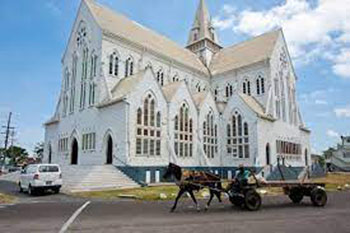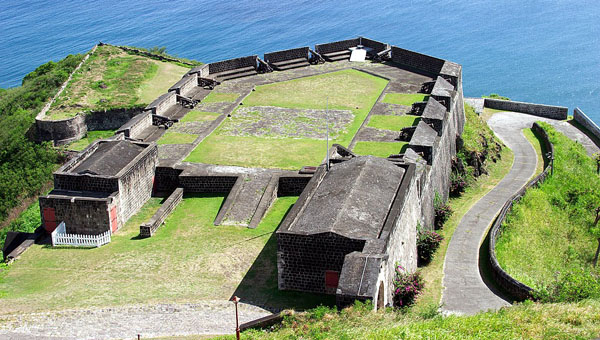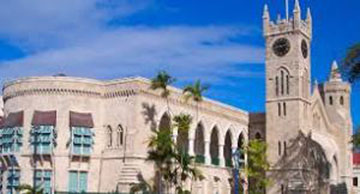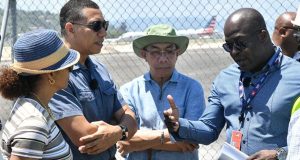By Elizabeth Morgan
Guest Contributor
I am moving away from looking at the merchandise exports of the Caribbean Community (CARICOM), into looking at trade in services, starting with tourism, which is the region’s principal service export.
As COVID-19 has shown, several countries in the region are tourism-dependent. I feel that the region needs to develop a more comprehensive and diversified tourism package, actively combining the traditional sun, sea, sand, party and romance tourism with its rich historical heritage.
I have read that historical heritage has been a key driver of tourism for centuries, and remains one of the most popular reasons, why people travel to other countries. In fact, I am noting that in tourism, history is never outdated.
The US National Trust for Historic Preservation defines heritage tourism as “traveling to experience the places, artifacts, and activities that authentically represent the stories and people of the past and present”. I have also observed that those travelers, interested in heritage tourism, tend to stay longer, spend more, and travel more frequently, assuming this remains the same, post-COVID.
In travelling within the CARICOM region, I have not found an enthusiasm to promote its history – our stories, buildings, artifacts.
It seems that there is a reluctance to offend our visitors from mainly the USA, Canada, the United Kingdom and parts of the European Union (EU), who are on vacation, by mentioning our stories of colonization, slavery, indentured labour and exploitation.
Where it is, an abridged, sanitized and romanticized version is presented. We seem to be ashamed of our history and prefer to highlight sun, sea, sand and pleasure.
The CARICOM countries each have an extraordinary story to tell and, believe it, we do not all have the same history.
Dominica, with its existing native peoples, the Kalinago (Caribs), and French, African and British influences, is quite different from Jamaica with its Spanish, African, Chinese, Indian and British heritage and reminders of its native peoples, the Tainos (the Arawaks).
The region has seven UNESCO world heritage sites, historical and natural, which include Antigua’s Naval Dockyard at English Harbour; the Brimstone Hill Fortress in St. Kitts and Nevis; Historic Bridgetown and the Garrison in Barbados; the Citadel in Haiti; and the multi-faceted Blue and John Crow Mountains in Jamaica.
In addition, there are unique buildings, public and private. Guyana, with its Dutch/British influences, has some of the most impressive wooden buildings. There are the windmills, which provided energy in Antigua. Of the Martello Towers, used for coastal fortifications, remaining in the world, at least two are in the CARICOM region — at Fort Nugent in Jamaica and in Barbuda.
Regrettably, many historic buildings in the region are in a state of disrepair, with many being quite dilapidated and on the brink of disappearing.
The Challenges
The first challenge, faced by historical heritage in CARICOM, is awakening public interest in the preservation and restoration of historical buildings, and a recognition that they are not just old buildings that are unwelcomed reminders of an inglorious past, of oppression and poverty, but speak to who we were and have become, as a people.
It is also necessary to recognize their economic value. Historical heritage is first and foremost for the local people. As Marcus Garvey stated: “A people without knowledge of their past history, origin and culture, is like a tree without roots.”

St. Georges Cathedral in Georgetown, Guyana, a wooden Anglican church that has been designated a National Monument, reaches a height of 143 feet, and is the seat of the Bishop of Guyana. Is was designed by Sir Arthur Blomfield, opened on August 24, 1892, and was completed in 1899.
It seems though, that there are foreigners, who are more interested in our history than many of us, as Caribbean nationals. They are telling our stories and still acquiring our artifacts/memorabilia. Check online sites.
More effort needs to be placed on historical heritage to ensure that there are more effective policies and legislation, which protect/manage national heritage. There should be a unified national understanding and vision of historical preservation, which should be part of national development plans.
There has to be an effort to acquire buildings, artifacts and to document our history. Donations should be encouraged so that materials of historical value are not discarded as clutter or sold. Funds need to be invested in restoring, preserving, conserving and maintaining historical buildings, documents, artifacts and art works.
Most museums, which I have visited in CARICOM countries, need to be upgraded and properly managed, which means employing trained curators. A country, such as Jamaica, needs to expand and improve its national museum. There should be education centres, for both nationals and visitors.
If we are requesting that valuable artifacts in museums, overseas, be returned, then there should be somewhere to properly display and conserve them. Security also has to be provided for heritage sites.
A further challenge seems to be attracting private investments for development of historical sites.
Some investors see old buildings on prime land and think they should be demolished to enable modern use, constructing multi-story buildings, shopping centres or parking lots, regardless of which important historical figures or events were there or their architectural value. Yet some of these same persons would not expect this to happen in London, Paris, Washington, or even Beijing or New Delhi.
I believe that, in the years post-COVID, we, as a region, should endeavor to provide a more comprehensive, inclusive, tourism product, which showcases our historical heritage.
It is our story, the good, bad and ugly of it, and we should want our visitors to see and hear about it, giving an educational dimension to their visit, and building awareness of their own countries’ involvement in it.
Elizabeth Morgan is a specialist in International Trade Policy and International Politics.
 Pride News Canada's Leader In African Canadian & Caribbean News, Views & Lifestyle
Pride News Canada's Leader In African Canadian & Caribbean News, Views & Lifestyle







